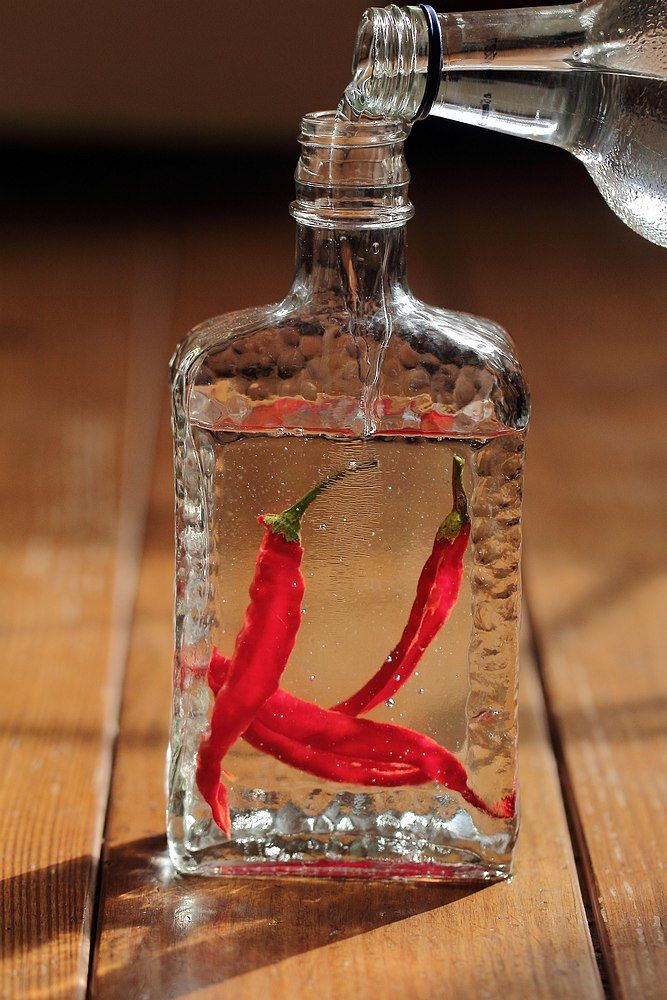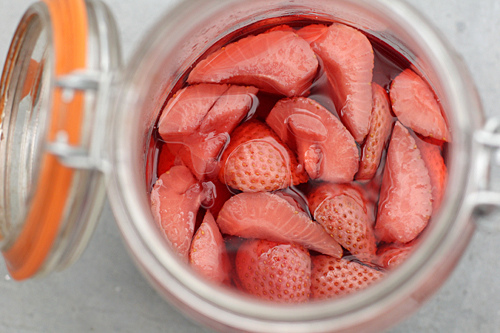How To Infuse Spirits At Home
How To Infuse Spirits At Home
Infusing your own spirits at home is the bartending enthusiasts dream.
Your creativity can go through the roof, as there are millions of flavour combos to play with.
The big kicker though, is it is really easy to do from home. Just follow our simple guide for bar quality infusions and take your cocktails to the next level.
The Basics
It’s about adding flavour to distilled spirit (such as vodka or gin) to change its flavour profile.
This flavour can come from any mix of fruits, herbs, spices or even vegetables.
There are of course any number of flavour combinations but put your chefs’ hat on and makes sure flavours are complimentary.
Needless to say, a carrot and grapefruit vodka might not hit the mark for many but each to their own if it’s your bag.
In general, we like to infuse base spirits that have fairly neutral flavour such as vodka, gin, white rum or tequila.
This is down to the fact that these mildly flavoured distillates work best with infusions (they don’t overwhelm infused flavour)
That’s not to say that darker spirits such as whiskies, dark rums or brandies won’t work, but we do need to choose a stronger flavoured infusion flavour to compete with the existing dark spirit flavour. For instance, we have made an incredible 5 Spice Infused Rum before.

The Science
Skip this bit if you’re the type of person who doesn’t like to know how things work. Go straight to the Infusing Spirits Method.
Now the very basic theory is that osmosis occurs during the infusion. The flavour and water from the fruit, herb or vegetable will flow into the alcohol and visa versa.
For any dried flavourings such as peels, spices or roots, something called dissolution occurs.
As there is no water present for osmosis, the solvent alcohol essential dissolves the flavour compounds which infuse into the spirit. Skittle Vodka anyone?
In essence, they become one and we get ourselves a tasty product.
Choose Your Spirit
So this is important. Don’t choose a bargain bucket spirit for your base…..infusion will not alter the fact that it’s thoroughly unpleasant to drink, so put that £9 vodka back on the shelf.
At the same time don’t go too pricey – for a vodka something middle of the road at say £12-14 will do nicely.
Now in terms of the type of spirit – this is up to you and your flavour combination. Vodka is the most popular base as its completely neutral and is perfect for infusions.
However, other spirits complement different flavours. Here in the UK, our native sloe berry work’s much better with gin. Other combinations could be orange infused bourbon, pineapple and ginger rum or a jalapeno tequila.
Container Preparation and Type
Choosing a container or receptacle for your infusion is easy and common sense. First up make sure it’s clean and sterilized. You don’t want anything to affect the flavour of your infusion. We think the absolute best option is a Kilner jar.
Just make sure it’s big enough to fit the liquid and your ingredients to create the infusion.

Ingredient Preparation
With all ingredients you decide to use, you will need to ensure they are clean and cut to an appropriate size for the container you decide to use.
• Citrus Fruit: cut up into small pieces about thumb size and make sure you retain the skin as it imparts great flavour. For more on this learn How To Make Oleo Saccharum – The Cocktail Service.
• Berries: remove any storks or inedible elements. Cut larger soft fruits in half and leave smaller fruits whole. Berries with hard skins need to be pinpricked or scored.
• Hard Fruits: for fruits such as mango or pineapples we need to peel the skin off and cut to size. Remove any hard pips or stones.
• Herbs: remove any stalks or woody elements of herbs such as thyme or rosemary. Leafy herbs such as basil just need to be picked to size.
• Spices: try and use whole spices where you can as it makes straining and finishing your infusion much, much easier.
Infusion Times
This varies dependant of how powerful the flavours are you are dealing with and can be anything from 24hrs to 2 weeks.
24hrs: any spices such as Chinese five spice or cinnamon
1 Week: herbs such as basil or thyme
2 Weeks: all other fruits and vegetables such as strawberries or blackberries

Infusing Spirits Method
So best practice is 2:1 ratio of fruit to spirits by weight. So 400g strawberries to 20oml spirit and so on. When using herbs or spices, we use significantly less as they are far more powerfully flavoured. See the step by step method below.
1. Prepare Ingredients
Prep your flavourings. Make sure all ingredients have been prepared as per the list in the post. Ensure that all leaves and stems are removed from fruits and veggies as they tend to add bitter notes.
2. Choose Storage Container
Once you have prepped ingredients you need to use, put them into your chosen container. This will usually be a Kilner Jar or a sealable bottle. Pour your chosen alcohol over the top.
3. Store the Infusion
Store this out of direct sunlight. It doesn’t need to be refrigerated necessarily; a dark cupboard will do fine.
4. Wait and Agitate
Now for the first two weeks, you need to agitate the liquid. This is simply a case of unending the bottle of jar to move the product about a bit. This is due to the sugars and flavour naturally sinking to the bottom. What we want is a balanced, even flavour across the infusion.
5. Taste Test
Once you’ve hit two weeks, we should have a nice flavour going on and it will be ready. The best method to find out is to have a taste. Dipping a cardboard straw in the liquid and putting your finger over the top of the straw will trap some liquid for tasting.
6. Filter and Store
If its spot-on flavour wise we need to strain – ideally through a coffee filter. Failing this you can use the subsidence technique where you wait for the flavour ingredients to sink to the bottom of the storage container. A filter will 100% give you the best results – particularly with smaller herbs or spices.
There we have it’s a quick guide to infusing spirits. If this has inspired you to get in the kitchen then next stop needs to be The Cocktail Hub where you will find more articles, how-to guides and recipes for cocktails.
For more cocktails tips check out how to carbonate cocktails.
Share
Get In Touch With Our Team
Speak To One Of Our Team Today Get in touch
